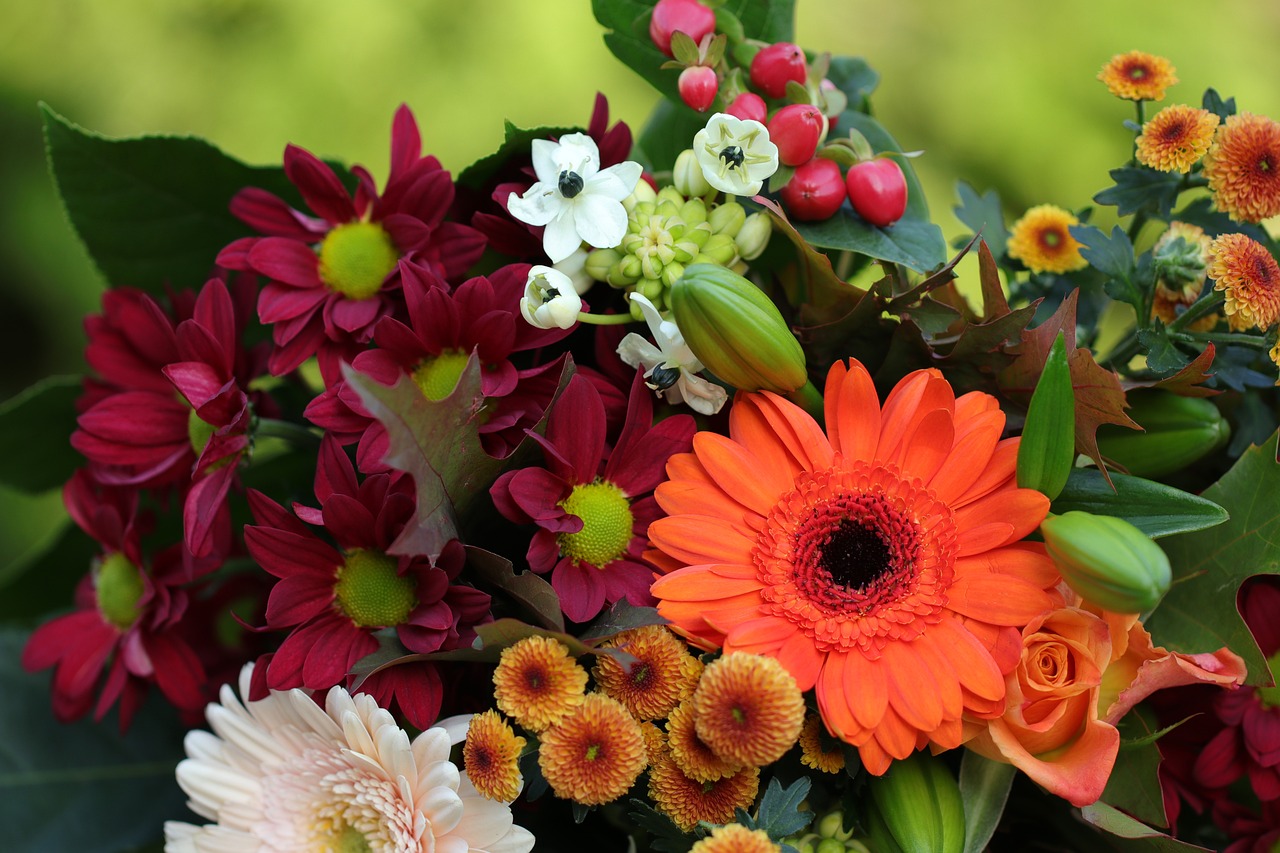
Flower colours for your bouquet
When it comes to making or ordering a bouquet, the choice of colour is just as important as the selection of flowers. The flower colours you choose will largely depend on who you want to send flowers to and the occasion, of course. For example, a delivery of fresh flowers to your spouse or partner typically has a romantic theme and includes only the best red roses. This type of arrangement however would not be something you would send to your mother or mother in law as it sends the message of passionate love and this is obviously not appropriate. Instead, for mum, you can choose a fine selection of orange, purple or pink flowers.
Something simple
When deciding on the colour scheme of the bouquet, you really have a lot of options. Remember, the right flower colours will always go a long way! First of all, if you are looking for a simple, timeless and romantic bouquet, you can combine several identical flowers of the same colour. Nothing says I love you like a dozen long-stemmed red roses. If you are a bit financially limited and a bouquet of a dozen red roses is beyond your budget, you can opt for the “less is more” option. While six red roses may seem like a half-hearted attempt, a single rose in a thin, clear vase is a wonderful romantic gesture without the hefty price tag.
Related colour schemes
As a florist and even a decorator can tell you, there are two main colour schemes you can choose from. That is, related and unrelated. Within these two categories, there are also sub-categories to choose from. Related schemes are divided into monochromatic and analogous colour schemes. Monochrome is probably the easiest to get right, so if you’re a beginner, you might be more comfortable with this option. Select a single colour and include several shades of the same colour in the bouquet. Analogous colour schemes are somewhat more complicated, consisting of different shades of three different colours. The key is to choose flower colours that are adjacent to each other on the colour wheel. Therefore, for flower arrangements, you will need to have a colour wheel on hand.
Unrelated colour schemes
Unrelated colour schemes are also divided into two subcategories: harmonic triad and direct complementary schemes. The trick of these arrangements is that the colours are not the same but create an undeniable harmony due to their differences. Direct complementary schemes are created using colours directly opposite each other on the colour wheel. A good example of this is purple and yellow. Triad colour schemes use three different colours equally spaced on the colour wheel. To create the perfect triad colour combination, you need to select one dominant colour and mix it with the other two so the other flowers don’t steal the show. You want your dominant colour to serve as the central flower of the arrangement while the other flower colours help create contrast.
Focal point
Another general florist’s rule to keep in mind when creating your bouquet is to place your darkest flower colours in the center or slightly below and in front of the arrangement. This creates a very distinct and striking focal point. Use the lighter colours to fill in the blanks and help the darker flowers pop even more against the lighter background. Remember not to add too many different colours or it could end up looking more like a messy mess than a pretty bouquet, and be sure to select your foliage carefully too.
Remember, if you are ever unsure about the best flower colours to use for a bouquet, you can always seek inspiration online. When shopping at your online florist, you will also be able to shop according to occasion which will really make it that much easier to find the best and most appropriate bouquet for the event as well as the recipient.
